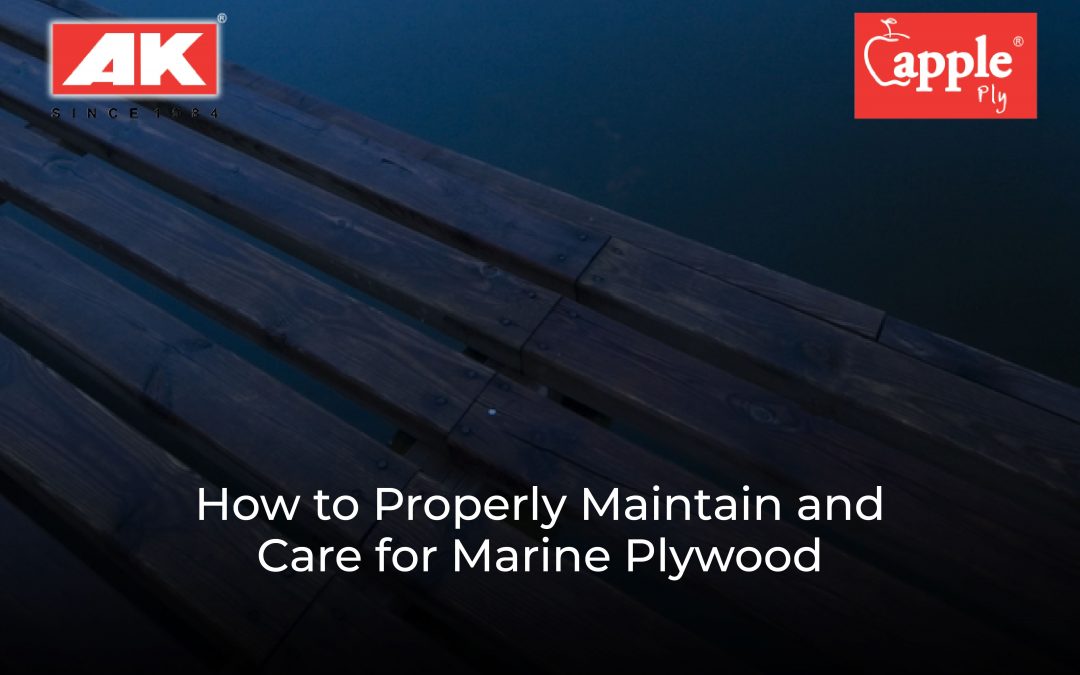Setting sail for adventure? Make sure your marine plywood is ship-shape! Marine plywood is a remarkable material, engineered to withstand the harshest aquatic conditions, but even the toughest plywood needs a little TLC to stay afloat.
In this guide, we’ll dive into the world of marine plywood maintenance and explore the best ways to protect your investment.
From regular inspections to marine plywood sealing techniques, we’ll show you how to seal marine plywood like a pro and keep it looking its best, even in the face of rough seas and salty air.
By mastering these simple yet effective maintenance tips, you’ll be able to enjoy your marine plywood for years to come – no matter what the ocean throws your way!
Let’s start now!
The Importance of Regularly Cleaning Your Marine Plywood: Keep it Ship-Shape!
We all know that cleaning is a crucial step that can’t be overlooked, right? To get into the details of cleaning it’s essential to know why cleaning is so important and how to do it right.
Why is Cleaning Crucial?
Dirt, grime, and saltwater can wreak havoc on your marine plywood, causing damage and deterioration. Regular cleaning helps to:
- Remove dirt and debris that can scratch the surface
- Prevent the growth of mold and mildew
- Maintain the integrity of the plywood’s water-resistant coating
Best Practices for Cleaning: Get it Right!
Cleaning your marine plywood requires a gentle touch. Here are some best practices to follow:
- Gentle Washing: Use a soft-bristled brush or a clean cloth to wipe down the plywood. Avoid using harsh chemicals or abrasive cleaners that can damage the surface.
- Rinsing Thoroughly: Rinse the plywood thoroughly with clean water to remove any dirt or debris. This is especially important when cleaning clean water-resistant plywood to prevent any residue buildup.
- Drying Properly: Use a clean towel to dry the plywood, paying extra attention to any crevices or corners where water can collect. This helps to prevent water spots and damage.
By following these simple cleaning tips, you’ll be able to keep your marine plywood in top condition and ensure it continues to perform well over time. Regular cleaning is a key part of marine plywood maintenance, so make it a habit to clean your plywood regularly!
Sealing the Marine Plywood
Let’s dive into the world of sealing and explore why it matters and how to seal marine plywood correctly.
Why Sealing Matters?
Sealing your marine plywood is crucial for its longevity and performance. A good sealant protects the plywood from:
- Water damage and rot
- UV degradation and discoloration
- Salt and chemical damage
Step-by-Step Sealing Process: A Guide to How to Seal Marine Plywood
Sealing marine plywood is a straightforward process that requires some preparation and attention to detail. Here’s a step-by-step guide:
- Surface Preparation: Clean and sand the plywood surface to ensure a smooth, even finish. Remove any dirt, dust, or debris that might interfere with the sealant.
- Choose the Right Sealant: Select a marine-grade sealant that’s specifically designed for marine plywood. Consider factors like UV resistance, water resistance, and durability.
- Application and Coats: Apply the sealant according to the manufacturer’s instructions, typically using a brush or roller. Apply multiple coats, allowing each coat to dry before applying the next one.
Also, read: BWP-Grade Marine Plywood: The Strongest Plywood for Coastal and Marine Applications.
Properly Storing Marine Plywood: Storage Tips
When not in use, your marine plywood needs a safe haven to stay in top condition. Storing it correctly is crucial to prevent damage, warping, or delamination. Let’s explore how to store plywood correctly and keep it ship-shape.
How to Store it Right?
Storing marine plywood requires attention to detail to maintain its quality. Here are some tips to store your marine plywood correctly:
- Dry, Well-Ventilated Area: Store your marine plywood in a dry, well-ventilated area away from direct sunlight and moisture. This helps prevent warping, delamination, or mold growth.
- Flat and Elevated Position: Store the plywood flat on a sturdy surface, elevated off the ground to prevent water accumulation. This ensures the plywood doesn’t absorb moisture or get damaged.
- Covered and Protected: Cover the plywood with a breathable material, like a tarp or cloth, to protect it from dust and debris. Avoid using plastic sheets, which can trap moisture.
- Inspect Regularly: Regularly inspect your stored marine plywood for signs of damage, warping, or delamination. This helps you catch any issues early and prevent further damage.
Handling and Transportation Tips
When it comes to marine plywood, handling and transportation require extra care to prevent damage. Let’s explore what to avoid and what to do instead.
What to Avoid?
Avoid dragging, dropping, or bending the marine plywood, as this can cause scratches, cracks, or delamination.
What to Do Instead?
- Lift with Care: Lift the plywood carefully, using proper lifting techniques and equipment, to prevent straining or damaging the material.
- Secure During Transit: Secure the plywood during transportation using straps or ropes to prevent shifting or movement.
Best Practices for Long-Term Marine Plywood Maintenance
To ensure your marine plywood lasts for years to come, follow these best practices:
1. Reapply Sealant Periodically
Reapply sealant to your marine plywood periodically to maintain its protective barrier and prevent water damage. AK Apple Ply marine plywood, for example, requires regular sealant application to maintain its durability.
2. Avoid Prolonged Sunlight
Avoid exposing your marine plywood to prolonged sunlight, as UV rays can cause degradation and discoloration.
3. Clean Spills Immediately
Clean spills and messes immediately to prevent damage and staining.
4. Sand Before Re-sealing
Sand the surface of your marine plywood before re-sealing to ensure a smooth, even finish and optimal sealant adhesion.
💡Pro Tip: Regular marine plywood maintenance is key to extending its lifespan and preventing costly repairs.
How to Identify Quality Marine Plywood?
When it comes to selecting marine plywood, it’s essential to know what to look for to ensure you’re getting a high-quality product. Let’s dive into the key factors to consider.
What to Look For?
When evaluating marine plywood, there are several factors to consider. Here are some key things to look out for:
- Certifications: Look for ISI and ISO certifications, which ensure the plywood meets industry standards. AK Apple Ply, for example, is both ISI and ISO certified, guaranteeing its quality and durability.
- Uniform Core Layers: Check for uniform core layers, which indicate a well-manufactured plywood. This ensures the plywood’s strength and stability.
- Preservative Treatments: Opt for plywood that has undergone preservative treatments to protect it from rot, decay, and insect damage.
Choose Trusted Brands
It’s crucial to choose a trusted brand that offers high-quality products. Consider the following things before going for any brand:
- Plywood for Coastal Homes: For coastal homes, consider AK Apple Ply, a brand that’s specifically designed to withstand the harsh marine environment.
- Clean Water-Resistant Plywood in India: If you’re looking for clean water-resistant plywood in India, AK Apple Ply is a great option. Their plywood is designed to withstand exposure to water and humidity.
- Premium Plywood Brand India: Look for premium plywood brands in India that offer high-quality products, like AK Apple Ply, which is known for its durability and performance.
Related blog: The Importance of BWP Plywood for Mangalore’s Coastal Homes.
Additional Tips for DIY Marine Projects
When working on DIY marine projects or maintaining your marine plywood, it’s essential to be prepared and aware of common mistakes to avoid. Let’s highlight some valuable tips to help you navigate the waters.
- Planning Ahead: Before starting your project, take the time to plan and design your build. Consider factors like materials, tools, and weather conditions. A well-planned project is a successful project!
- Tool Considerations: Choose the right tools for the job. Marine projects often require specialized tools that can withstand the harsh marine environment. Invest in quality tools that’ll make your project easier and safer.
Common Mistakes to Avoid in Marine Plywood Maintenance
Even with the best intentions, mistakes can happen. Here are some common mistakes to avoid when maintaining your marine plywood:
- Using Regular Wood Sealants: Don’t make the mistake of using regular wood sealants on your marine plywood. Instead, opt for marine-grade sealants that can withstand the harsh marine environment.
- Improper Storage: Store your marine plywood in a dry, well-ventilated area, away from direct sunlight and moisture. Improper storage can lead to warping, delamination, or rot.
- Neglecting Regular Inspections: Regular inspections are crucial to identifying potential issues before they become major problems. Don’t neglect to inspect your marine plywood regularly to ensure it remains in top condition.
The Key to Marine Plywood Durability
The Key to Marine Plywood Durability
Marine plywood is a remarkable material, engineered to withstand the harshest aquatic conditions.
However, its durability depends on various factors, including quality, maintenance, and environmental conditions. Let’s dive into the key to marine plywood durability.
Quality Matters
The quality of marine plywood is crucial to its durability. Look for plywood that’s made from durable, rot-resistant wood species and manufactured using high-quality adhesives.
Marine Plywood Maintenance
Regular marine plywood maintenance is essential to extending its lifespan. This includes regular inspections, cleaning, and applying protective coatings to prevent damage from water, UV rays, and insects.
Plywood for Boats or Docks
Plywood for boats or docks demands the best – durability, water resistance, and strength. With the right material, your vessel or dock will withstand the test of time and turbulent waters. AK Apple Ply’s marine plywood is built to last.
Choosing the Right Brand
When it comes to marine plywood, choosing the right brand can make all the difference. Consider AK Apple Ply marine plywood, known for its durability and performance.
Convenience at Your Fingertips
If you’re looking for convenience, you can even buy marine plywood online from reputable suppliers. This saves you time and effort, allowing you to focus on your project.
Get Ready to Set Sail!
Buy AK Apple Ply marine plywood online today and start building your dream project with confidence!
Click Here to Buy Now and Get Exclusive Discounts!
Happy building!
Frequently Asked Questions (FAQs)
1. How often should marine plywood be sealed?
Seal marine plywood every 1-3 years, depending on exposure to water and weather conditions.
2. Can I use regular wood sealant for marine plywood?
No, use a marine-grade sealant specifically designed for marine plywood to ensure maximum protection.
3. What’s the best way to remove mold from marine plywood?
The best way to remove mold from marine plywood is to clean mold with a solution of bleach and water, then rinse and dry thoroughly.
4. Can marine plywood be painted after sealing?
Yes, but ensure the sealant is fully cured and compatible with the paint.
5. How can I tell if my marine plywood is damaged?
Check for signs of delamination, warping, or discoloration, and inspect for soft spots or cracks.




